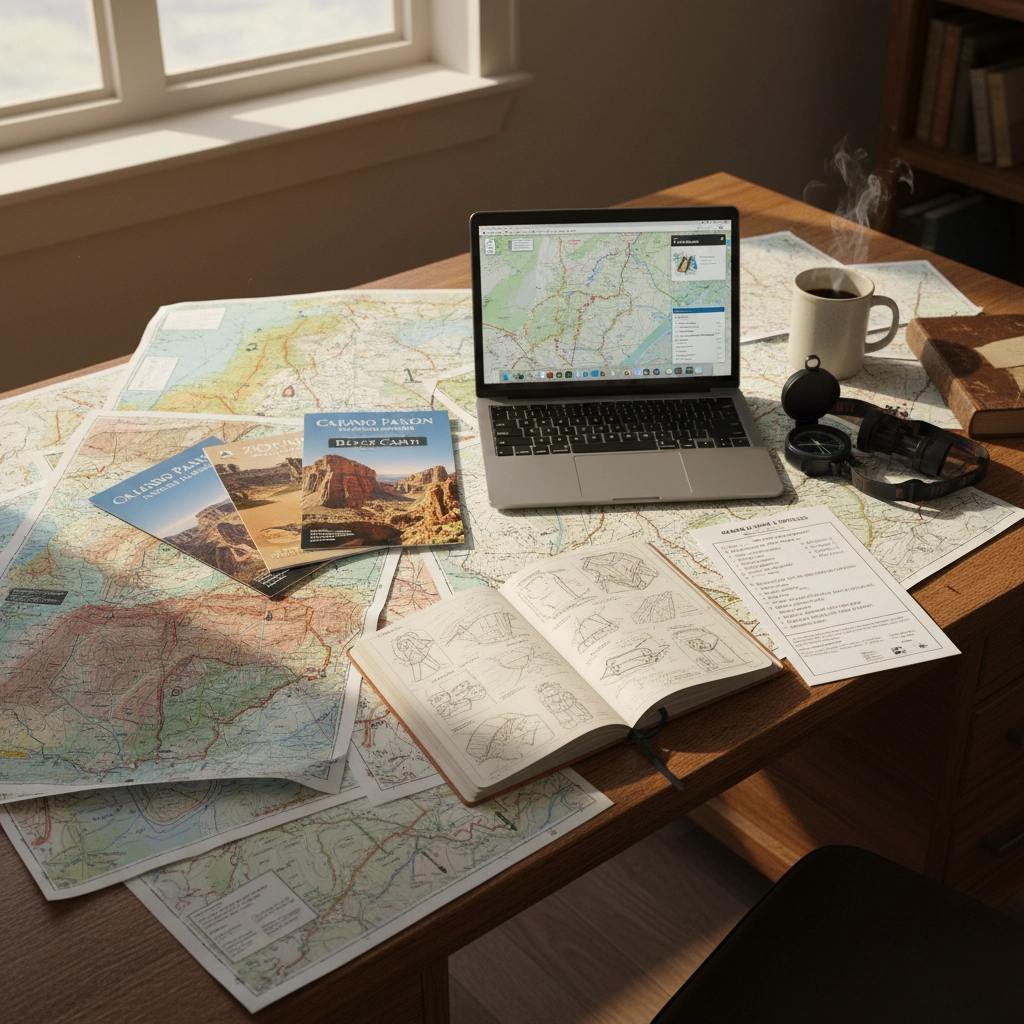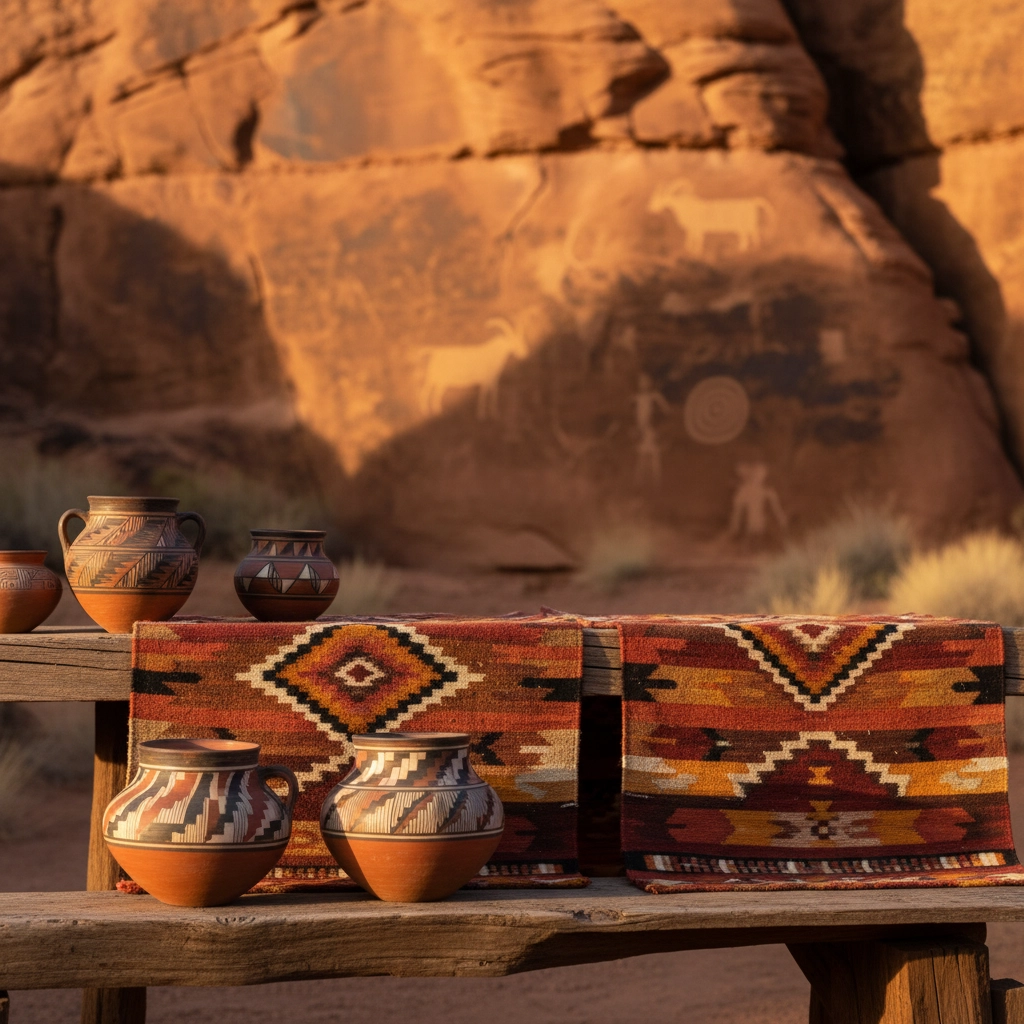The Ultimate Guide to Grand Canyon Educational Trips: Geology, History, and Service Learning Combined
- Caleb Mullenix
- 1 hour ago
- 5 min read
Planning a comprehensive educational expedition to the Grand Canyon region requires careful coordination to maximize learning opportunities while ensuring student safety and engagement. This ultimate guide provides educators with essential strategies for integrating geology, Native American history and culture, and meaningful service learning experiences across the Colorado Plateau's most spectacular destinations.
Essential Planning Framework for Maximum Educational Impact
Begin your planning process 8-12 months in advance to secure optimal programming and accommodations. Early preparation ensures access to ranger-led educational programs, specialized camping experiences, and expert-guided expeditions that fill quickly during peak academic travel seasons.
Establish clear learning objectives that align with your curriculum standards before booking any components of your trip. Determine whether your primary focus centers on earth science, cultural anthropology, environmental conservation, or interdisciplinary connections. Share these educational goals with all stakeholders: including students, parents, chaperones, and participating educators: to ensure unified expectations and preparation.
Create detailed pre-trip preparation protocols that include:
Student research assignments on regional geology and Native American tribal histories
Physical conditioning requirements for hiking and outdoor activities
Equipment checklists tailored to seasonal conditions and planned activities
Emergency contact information and medical considerations documentation
Cultural sensitivity training emphasizing respectful engagement with tribal lands and traditions

Geology-Centered Learning Opportunities
The Colorado Plateau offers unparalleled opportunities for hands-on geological education spanning 2 billion years of Earth's history. Focus your geology curriculum on these key learning components:
Stratigraphic Analysis and Rock Formation Studies Engage students in direct observation of rock layers at multiple viewing points throughout the Grand Canyon. Emphasize the principle of superposition while examining limestone, sandstone, and shale formations that reveal ancient marine and terrestrial environments. Utilize the Bright Angel Trail's switchbacks to demonstrate how different rock units weather and erode at varying rates.
Erosional Processes and Landscape Evolution Demonstrate the power of the Colorado River's ongoing erosion by visiting multiple viewpoints that showcase different stages of canyon development. Compare the narrow Inner Gorge's steep walls with the broader Tonto Platform to illustrate differential erosion of hard and soft rock layers.
Regional Geological Connections Expand beyond the Grand Canyon to examine related geological formations at Zion National Park's towering Navajo Sandstone cliffs and Bryce Canyon's distinctive limestone hoodoos. These destinations provide comparative examples of how similar rock types respond to different climatic and erosional conditions.
Native American History and Cultural Integration
Respectful integration of Native American perspectives requires careful planning and authentic partnerships with tribal educators and cultural centers. Focus on these essential components:
Tribal Sovereignty and Contemporary Connections Begin with acknowledgment that the Grand Canyon region represents the ancestral homelands of multiple tribes, including the Havasupai, Hualapai, Navajo, Hopi, and Southern Paiute peoples. Emphasize that these are not historical peoples but contemporary nations with ongoing connections to these landscapes.
Traditional Ecological Knowledge Partner with tribal cultural centers in Tuba City and other regional locations to learn how indigenous peoples have observed and understood these landscapes for thousands of years. Discuss traditional plant uses, seasonal migration patterns, and sustainable resource management practices that continue today.
Archaeological Site Visits and Ethics Include visits to appropriate archaeological sites while emphasizing the importance of preservation and respectful observation. Discuss federal laws protecting cultural resources and the ongoing significance of these places to tribal communities.

Service Learning and Conservation Action
Transform passive observation into active engagement through meaningful service learning opportunities that benefit the region's ecosystems and communities.
Citizen Science Participation Collaborate with park scientists on ongoing research projects such as vegetation monitoring, wildlife observation protocols, or water quality assessment. Students contribute to genuine scientific understanding while developing research skills and environmental awareness.
Trail Maintenance and Restoration Activities Participate in appropriate trail maintenance projects under expert supervision. These activities teach students about sustainable recreation practices while providing direct service to preserve access for future visitors.
Community Partnership Projects Establish partnerships with local schools or community organizations in gateway communities like Page, Tuba City, or Sedona. Design collaborative projects that benefit local students while fostering cultural exchange and mutual learning.
Regional Destination Integration
Maximize your educational investment by strategically incorporating multiple destinations across the Colorado Plateau region:
Sedona's Red Rock Country Utilize Sedona's accessible red sandstone formations to introduce geological concepts before visiting the Grand Canyon's more complex stratigraphy. The area's distinctive iron oxide coloration provides excellent opportunities for discussing chemical weathering processes and mineral composition.
Page and Glen Canyon Recreation Area Examine the controversial history of Glen Canyon Dam while discussing water resource management in the American Southwest. The contrast between the natural canyon environment and human engineering provides rich material for environmental science discussions.
Zion National Park's Narrow Canyons Experience slot canyon formation through appropriate hiking in Zion's lower canyon areas. The park's hanging gardens and desert riparian ecosystems offer excellent opportunities for ecological studies and water cycle observation.
Bryce Canyon's High Plateau Environment Contrast the Grand Canyon's desert environment with Bryce Canyon's high-elevation pine forests and distinctive limestone formations. Students observe how elevation affects climate, vegetation, and erosional processes within the same regional geological setting.

Safety Protocols and Risk Management
Ensuring student safety throughout your expedition requires comprehensive planning and constant vigilance. Implement these essential safety measures:
Physical Preparation and Assessment Require medical clearance for all participants and assess individual fitness levels before departure. Establish clear guidelines for hiking distances, elevation changes, and physical demands appropriate for your student group's capabilities.
Weather Monitoring and Contingency Planning Monitor weather conditions continuously and maintain flexible itineraries that accommodate sudden changes. Desert environments can experience rapid temperature shifts, flash flood risks, and severe thunderstorms that require immediate response protocols.
Emergency Communication and Evacuation Plans Establish reliable communication systems for all expedition locations, including satellite communication devices for remote areas. Create detailed emergency evacuation plans specific to each destination and activity, with local emergency contact information readily accessible.
Program Implementation and Assessment
Design assessment strategies that capture learning outcomes while maintaining expedition momentum:
Field Journaling and Observation Records Require daily field journal entries that combine scientific observation, cultural reflection, and personal growth documentation. Provide specific prompts that guide students toward deeper analysis while allowing individual expression.
Group Projects and Collaborative Learning Assign small-group research projects that students present to their peers during evening reflection sessions. These presentations reinforce learning while developing communication skills and group collaboration abilities.
Post-Expedition Integration Plan comprehensive post-trip activities that connect field experiences with ongoing curriculum requirements. Design projects that demonstrate mastery of geological concepts, cultural understanding, and environmental stewardship principles encountered during the expedition.
Maximizing Long-Term Educational Impact
Ensure your Grand Canyon expedition creates lasting educational benefits that extend far beyond the trip duration. Connect field experiences directly with classroom learning objectives and state academic standards. Encourage students to share their experiences with younger students, creating mentorship opportunities that reinforce their own learning while inspiring future participants.
Document student growth through pre- and post-expedition assessments that measure both academic understanding and personal development. Create opportunities for students to present their experiences to school boards, parent groups, and community organizations, developing public speaking skills while advocating for continued support of educational travel programs.
The Grand Canyon region offers unmatched opportunities for integrated learning that combines rigorous academic content with transformative personal experiences. Through careful planning, comprehensive safety protocols, and meaningful partnerships with local communities and tribal educators, your educational expedition will provide students with profound connections to Earth's geological history, diverse cultural perspectives, and personal responsibility for environmental stewardship.



Comments